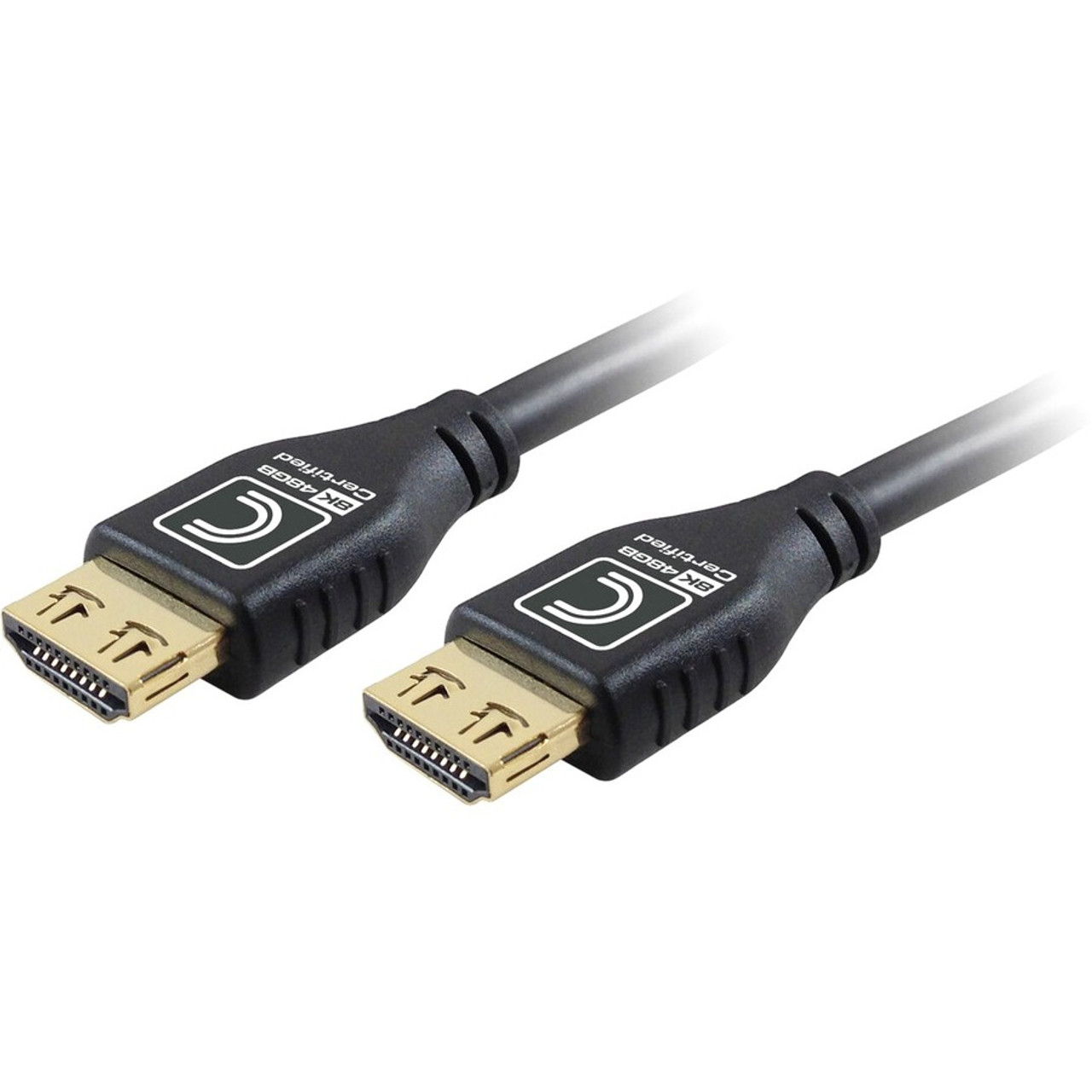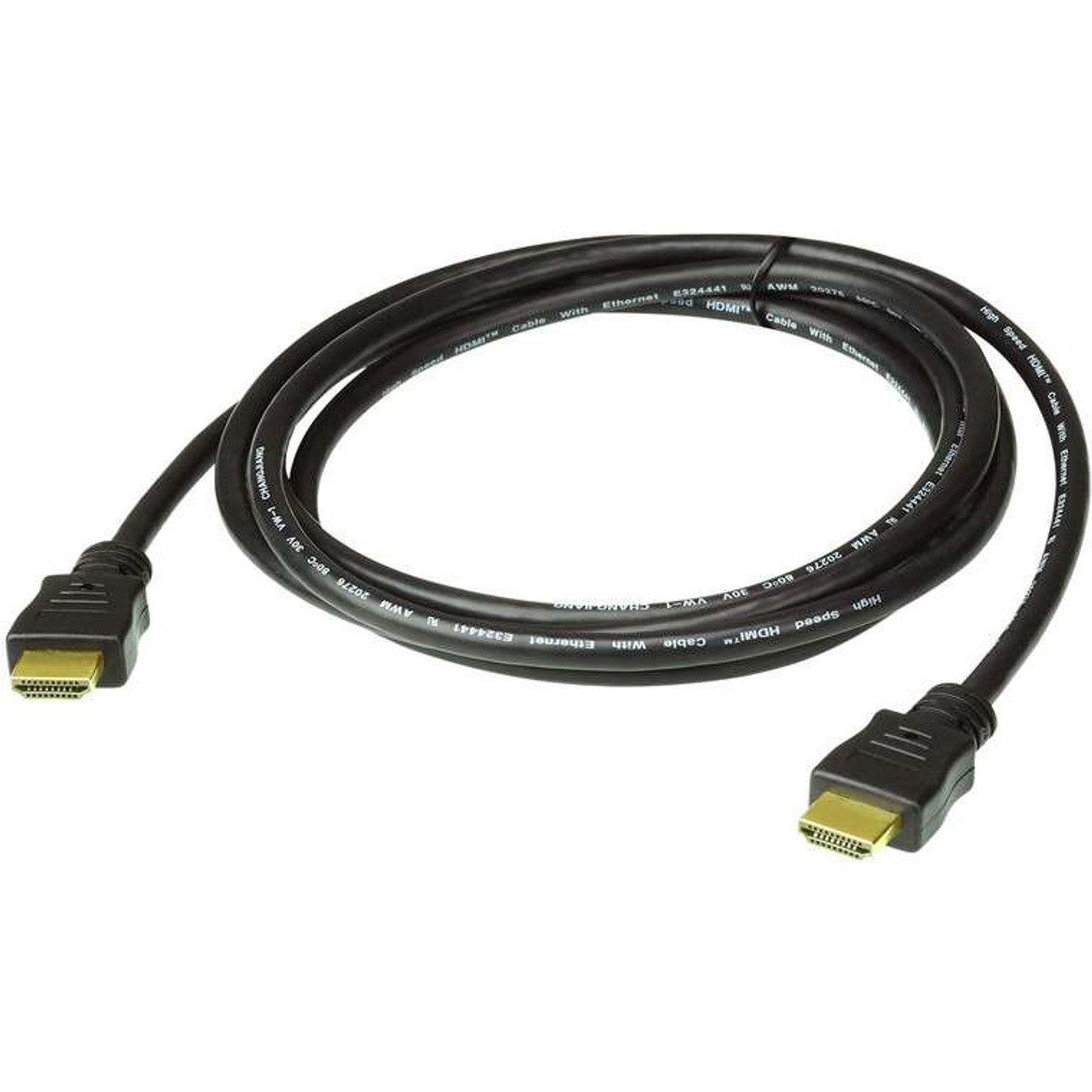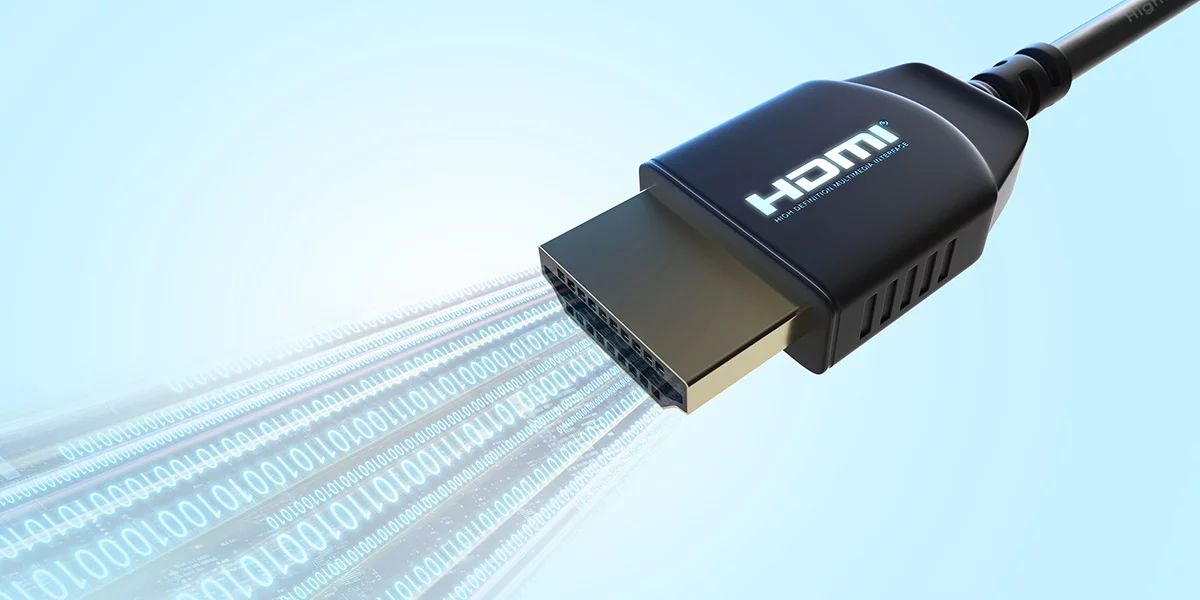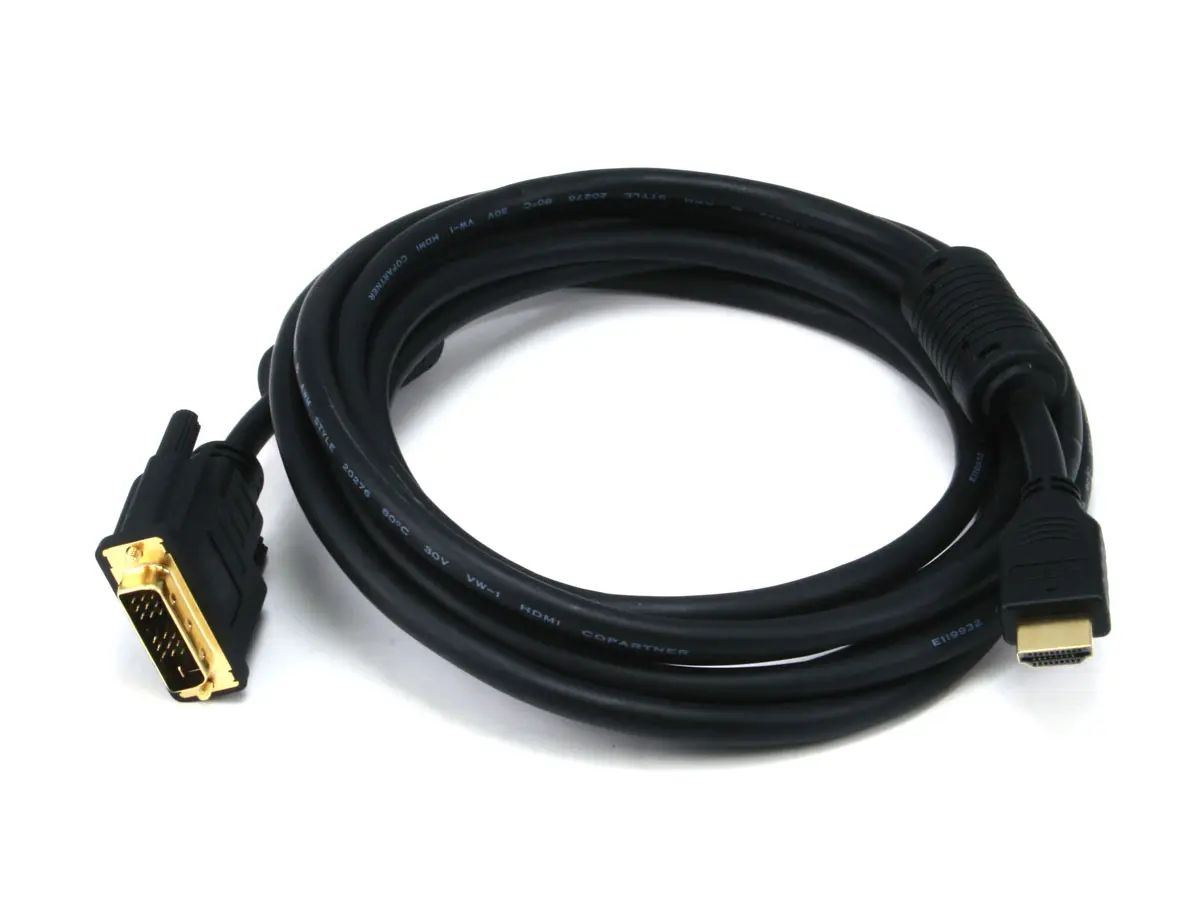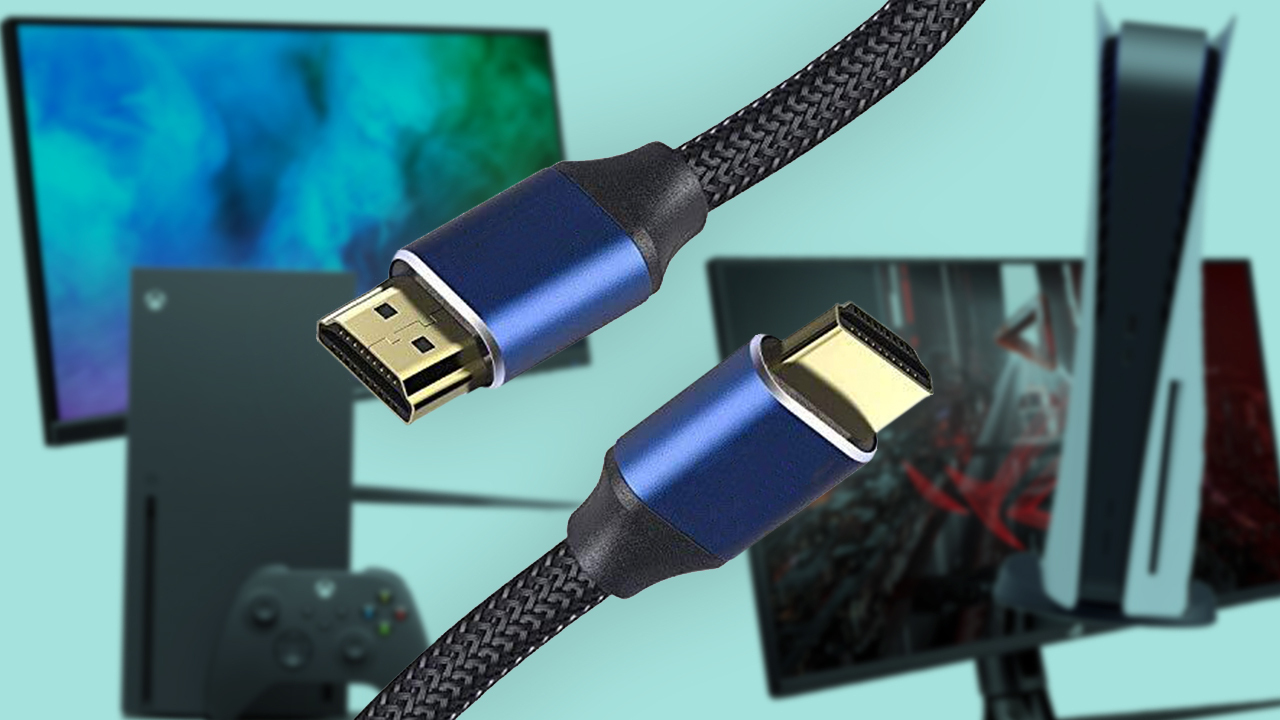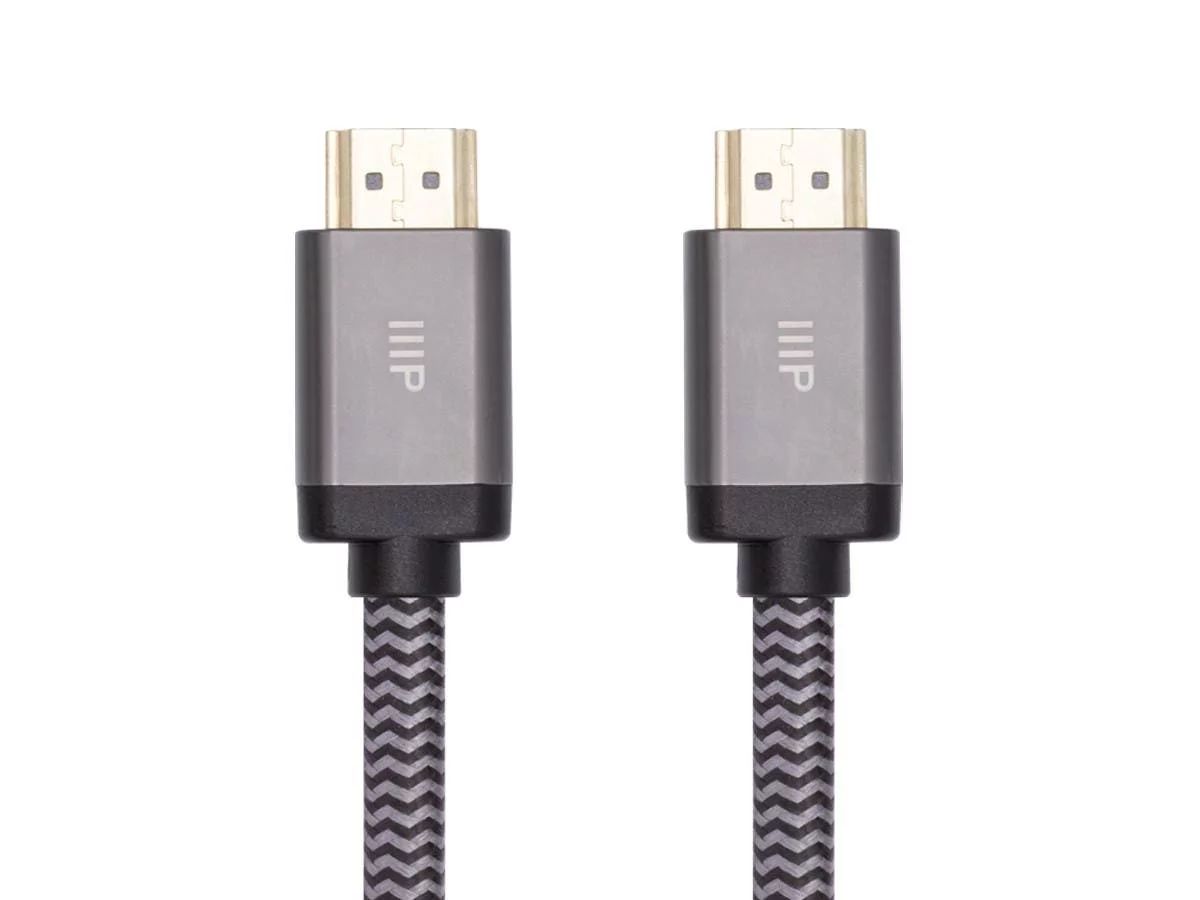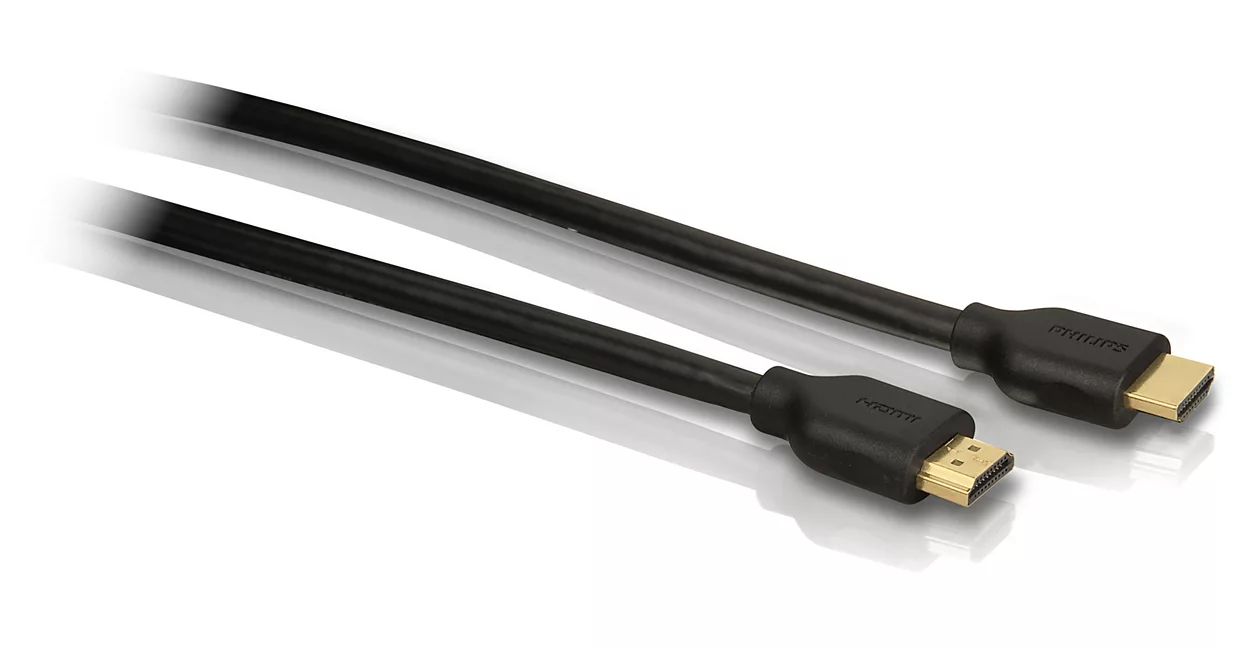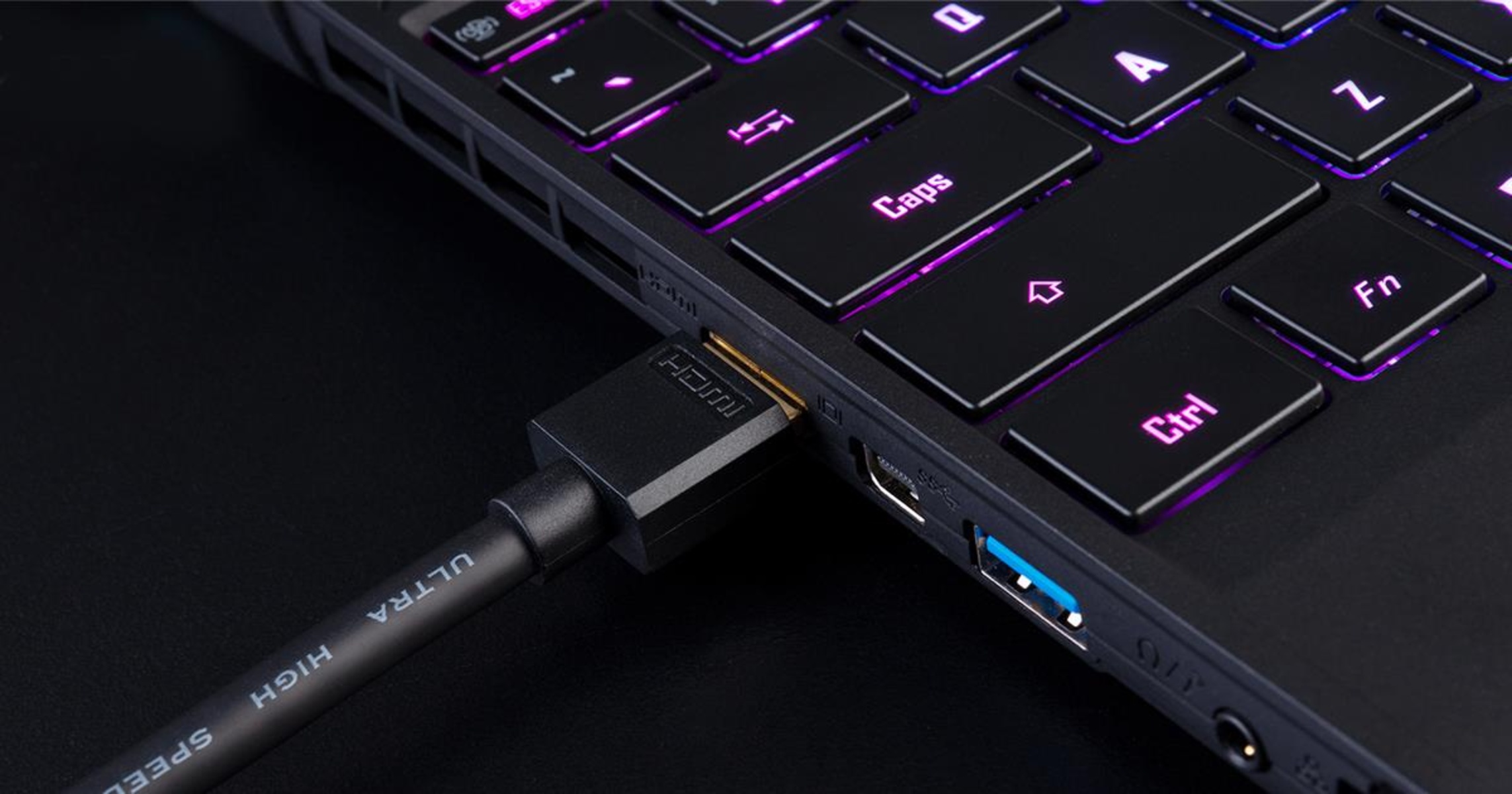What HDMI Cable for 4K 120Hz
As technology advances, the demand for higher-quality video and audio experiences also increases. If you own a 4K television with a 120Hz refresh rate, you may be wondering what HDMI cable is required to fully enjoy this impressive resolution and fluid motion. Choosing the right HDMI cable for 4K 120Hz can make a significant difference in your viewing experience.
Before delving into the specifics, it’s important to understand what HDMI is and how it works. HDMI, which stands for High-Definition Multimedia Interface, is a digital connection standard for transmitting audio and video signals. It has become the primary interface for connecting devices such as televisions, gaming consoles, Blu-ray players, and streaming devices.
There are different versions of HDMI, each with its own capabilities and features. These versions include HDMI 1.4, HDMI 2.0, and the latest standard, HDMI 2.1. When it comes to 4K resolution at 120Hz, HDMI 2.1 is the standard you should look for.
One of the key factors in determining the compatibility of an HDMI cable for 4K 120Hz is its bandwidth capability. Bandwidth refers to the amount of data that can be transmitted per second. HDMI 2.1 cables have significantly higher bandwidth compared to previous versions, allowing them to handle the immense data requirements of 4K at a 120Hz refresh rate.
When it comes to purchasing an HDMI cable for 4K 120Hz, it’s crucial to look for the “Ultra High-Speed” certification. This certification ensures that the cable meets the stringent requirements of HDMI 2.1, including the ability to support 4K resolution at 120Hz.
There are two types of HDMI cables: passive and active. Passive HDMI cables are standard cables that rely on the devices’ built-in electronics to transmit the signal. Active HDMI cables, on the other hand, have built-in signal boosters that help maintain signal integrity over longer distances. For most home setups, a passive Ultra High-Speed HDMI cable should be sufficient.
When choosing the right HDMI cable for 4K 120Hz, you should also consider the length of the cable. Longer cables may introduce signal degradation, so it’s important to choose a cable length that suits your needs while ensuring optimal performance.
In summary, to fully enjoy the breathtaking visuals of 4K resolution at a 120Hz refresh rate, it is essential to invest in an HDMI cable that is capable of handling these demanding requirements. Look for an Ultra High-Speed HDMI cable that is certified for HDMI 2.1, ensuring that it can support the bandwidth needed for a seamless and immersive viewing experience.
Understanding HDMI
In today’s digital world, HDMI (High-Definition Multimedia Interface) has become the go-to standard for connecting audiovisual devices. Whether you’re connecting a Blu-ray player to your TV or hooking up a gaming console, HDMI offers a seamless and high-quality connection. To fully grasp the significance and functionality of HDMI, let’s dive deeper into understanding it.
Put simply, HDMI is a digital connection standard that allows for the transmission of both audio and video signals between compatible devices. It has largely replaced analog connections like composite or component video cables due to its superior quality and convenience.
One of the key advantages of HDMI is its ability to transmit uncompressed digital signals. This means that the audio and video data remains in its original form, ensuring optimal fidelity and clarity. Unlike analog connections, HDMI eliminates the need for conversion or lossy compression, resulting in superior audiovisual output.
HDMI cables come in different versions, denoted by numbers such as 1.4, 2.0, and 2.1. Each version brings new capabilities and features, including increased bandwidth, support for higher resolutions, and improved audio options.
Another significant feature of HDMI is its ability to carry various types of data besides audio and video. For example, HDMI can transmit Ethernet data, allowing you to use a single cable to both connect your device to the internet and transfer audiovisual signals.
HDMI cables also support features like HDMI-CEC (Consumer Electronics Control), which enables control of multiple devices through a compatible remote control. This feature simplifies the setup and operation of home theater systems by allowing you to control all connected devices with a single remote.
It’s important to note that HDMI cables are backward compatible. This means that an older HDMI device can be connected to a newer HDMI device using a cable of any version, but the features and capabilities of the older device may be limited to what the cable and receiving device support.
Understanding HDMI and its benefits is crucial when it comes to setting up and optimizing your audiovisual systems. By utilizing HDMI cables, you can enjoy the highest-quality audio and video output, seamless device connectivity, and access to a range of advanced features.
HDMI Versions and Capabilities
HDMI (High-Definition Multimedia Interface) has evolved over the years with various versions offering enhanced capabilities and features. Understanding the differences between HDMI versions is essential when selecting the right cable for your audiovisual setup. Let’s take a closer look at HDMI versions and their respective capabilities.
HDMI 1.4: HDMI 1.4 was a significant milestone in the evolution of HDMI. It introduced support for 3D formats, allowing you to experience immersive three-dimensional content. Additionally, HDMI 1.4 brought the Audio Return Channel (ARC), enabling audio to be sent from the TV back to a compatible audio system without the need for a separate audio cable. This version also supported 4K resolution at 30Hz, ideal for Ultra HD content playback.
HDMI 2.0: HDMI 2.0 introduced several improvements over its predecessor. It increased the maximum bandwidth to 18Gbps, enabling support for 4K resolution at 60Hz, which is essential for smoother motion and superior image quality. HDMI 2.0 also supported High Dynamic Range (HDR), allowing for enhanced contrast, color accuracy, and wider color gamut. This version was a significant leap forward in delivering a more immersive viewing experience.
HDMI 2.1: The latest standard, HDMI 2.1, brought a host of advanced features and capabilities. With a massive bandwidth of 48Gbps, HDMI 2.1 supports 4K resolution at a blazing fast 120Hz refresh rate. This means smoother motion, reduced blur, and an overall enhanced viewing experience. HDMI 2.1 also introduced Variable Refresh Rate (VRR), which synchronizes the display’s refresh rate with the output of the graphics card, minimizing screen tearing during gaming. Another notable feature is eARC (enhanced Audio Return Channel), delivering high-quality audio formats like Dolby Atmos over a single HDMI cable.
Each HDMI version has its own advantages and compatibility requirements. When choosing an HDMI cable, it is crucial to consider the capabilities of your devices and the desired features you wish to utilize.
It’s important to note that while HDMI cables are backward compatible, higher version cables may be required to support the full capabilities of newer HDMI devices. For example, if you have a TV with HDMI 2.1 capabilities, using an HDMI 2.0 cable may limit you to a 60Hz refresh rate instead of the desired 120Hz.
To ensure you’re getting the most out of your audiovisual setup, it’s recommended to use HDMI cables that align with the capabilities of your devices. HDMI 2.1 cables are the ideal choice for those seeking the utmost performance and future-proofing their systems.
The Importance of Bandwidth
When it comes to HDMI (High-Definition Multimedia Interface) cables, one of the crucial factors determining their capabilities is bandwidth. Bandwidth refers to the amount of data that can be transmitted per second. Understanding the importance of bandwidth is essential for choosing the right HDMI cable for your audiovisual needs.
With the development of higher-resolution displays and advanced audio formats, the demand for high bandwidth has increased. The higher the bandwidth of an HDMI cable, the more data it can transmit, resulting in better and more detailed audio and video output.
Bandwidth plays a significant role when it comes to supporting higher resolutions, refresh rates, and color depths. For example, if you want to enjoy 4K resolution at 60Hz or even 120Hz, you’ll need an HDMI cable with sufficient bandwidth to handle the immense data requirements of such high-resolution content.
Not having enough bandwidth can lead to signal degradation, resulting in visual artifacts like pixelation, noise, or signal loss. This can greatly impact the viewing experience, undermining the purpose of investing in high-quality audiovisual equipment.
HDMI 2.1 cables offer significantly higher bandwidth compared to previous versions. With a whopping 48Gbps of bandwidth, HDMI 2.1 supports 4K resolution at 120Hz, ensuring smooth and detailed visuals without compromising on quality.
It’s important to note that while HDMI cables are necessary for transmitting audio and video signals, they are also capable of transmitting other forms of data. This includes Ethernet, allowing for internet connectivity over an HDMI cable, reducing cable clutter and simplifying device connections.
Choosing an HDMI cable with the appropriate bandwidth for your audiovisual setup is vital to ensure optimal performance and compatibility. The wrong cable may limit the capabilities of your devices or result in subpar audiovisual output.
While it may be tempting to opt for lower-cost HDMI cables, it’s crucial to consider the bandwidth they offer. Investing in an HDMI cable with sufficient bandwidth, such as an Ultra High-Speed HDMI cable certified for HDMI 2.1, will future-proof your setup and provide the best possible audiovisual experience.
Always remember that bandwidth is a crucial aspect of HDMI cables. It determines the capacity to handle higher resolutions, refresh rates, and advanced audio formats. To fully enjoy the capabilities of your audiovisual devices, make sure to choose an HDMI cable with adequate bandwidth for your specific needs.
HDMI 2.1: The Standard for 4K 120Hz
With the increasing popularity of 4K resolution and high refresh rates, HDMI (High-Definition Multimedia Interface) 2.1 has emerged as the standard for delivering the best audiovisual experience. HDMI 2.1 brings a host of advancements that make it the ideal choice for those seeking 4K resolution at 120Hz.
One of the standout features of HDMI 2.1 is its massive bandwidth capacity. With a bandwidth of 48Gbps, HDMI 2.1 can handle the significant data requirements of 4K resolution at a 120Hz refresh rate. This means that each frame of content can be rendered smoothly and without the loss of detail or fluidity.
HDMI 2.1 also introduces support for Variable Refresh Rate (VRR), which enables the display to adjust its refresh rate dynamically to match the output of a gaming console or computer graphics card. This technology eliminates screen tearing and provides a seamless and immersive gaming experience.
In addition to VRR, HDMI 2.1 brings other gaming-related features, such as Quick Frame Transport (QFT) and Quick Media Switching (QMS). QFT reduces latency, allowing for quicker response times, while QMS eliminates the delay that occurs when switching between different media types, resulting in a smoother transition between video content.
HDMI 2.1 also supports Enhanced Audio Return Channel (eARC), which enables the transmission of high-quality audio formats like Dolby Atmos over a single HDMI cable. This ensures that you can enjoy immersive and theater-like sound without the need for multiple audio cables or complicated setups.
Furthermore, HDMI 2.1 delivers improved color representation with support for Auto Low Latency Mode (ALLM) and Dynamic HDR. ALLM automatically switches the display to its lowest latency mode when a gaming console is detected, reducing input lag. Dynamic HDR enhances contrast and color accuracy frame by frame, resulting in more vibrant and lifelike visuals.
It’s worth noting that, although HDMI 2.1 offers impressive features and capabilities, it may not be fully utilized by all existing devices. It’s essential to ensure that both the source device (e.g., gaming console, media player) and the receiving device (e.g., television, monitor) are HDMI 2.1 compatible to take advantage of all the features it offers.
As the demand for higher resolutions and refresh rates continues to grow, HDMI 2.1 has become the go-to standard for those seeking the ultimate audiovisual experience. Its increased bandwidth, VRR support, enhanced gaming features, and improved audio capabilities make it the ideal choice for 4K resolution at a fluid and smooth 120Hz refresh rate.
Ultra High-Speed HDMI Cables
When it comes to harnessing the full potential of advanced audiovisual technologies, Ultra High-Speed HDMI cables are the key. These cables are specifically designed to support the demanding requirements of the latest HDMI standards, such as HDMI 2.1, providing the necessary bandwidth for high-resolution and high-refresh-rate content.
Ultra High-Speed HDMI cables offer significantly higher bandwidth compared to previous HDMI versions. With a bandwidth of 48Gbps, these cables can handle the immense data transfer needed for 4K resolution at a fluid 120Hz refresh rate, ensuring smooth and lifelike visuals.
In addition to supporting higher resolutions and refresh rates, Ultra High-Speed HDMI cables also offer other advanced features. These features include support for variable refresh rates (VRR), auto low latency mode (ALLM), quick frame transport (QFT), quick media switching (QMS), and enhanced audio return channel (eARC).
VRR allows for the display’s refresh rate to sync with the output of a gaming console or computer’s graphics card, resulting in a tear-free and immersive gaming experience. ALLM automatically switches the display to its lowest latency mode, reducing input lag for real-time responsiveness. QFT and QMS enhance the overall gaming experience by reducing latency and providing smoother transitions between different media types.
Another important consideration when choosing Ultra High-Speed HDMI cables is their ability to support enhanced audio formats. The eARC feature enables the transmission of high-quality audio formats like Dolby Atmos over a single HDMI cable, eliminating the need for multiple audio connections and ensuring a seamless audio experience.
When purchasing Ultra High-Speed HDMI cables, it’s essential to look for the appropriate certification. The HDMI Forum, the governing body for HDMI standards, offers a certification program for cables to ensure their compliance with HDMI 2.1 specifications. Look for cables that display the official Ultra High-Speed HDMI Certification Label, indicating that they have been thoroughly tested and meet the stringent requirements for bandwidth and other features.
It’s important to note that while Ultra High-Speed HDMI cables are designed to support the latest HDMI standards, they are also backward compatible with older HDMI versions. This means that they can be used with devices that are HDMI 2.0, 1.4, or older. However, the full capabilities of the cable will depend on the capabilities of the connected devices.
For those seeking the best possible audiovisual experience with 4K resolution and high refresh rates, Ultra High-Speed HDMI cables are the optimal choice. Their high bandwidth, support for advanced features, and compatibility with the latest HDMI standards ensure a seamless and immersive audiovisual experience.
Active vs. Passive HDMI Cables
When it comes to HDMI (High-Definition Multimedia Interface) cables, you may come across two terms: active and passive. Understanding the difference between these two types of cables is important when selecting the right HDMI cable for your audiovisual setup.
Passive HDMI Cables: Passive HDMI cables are the most common type and are widely used for connecting various audiovisual devices. These cables rely on the built-in electronics of the connected devices to transmit the audio and video signals. They do not require any external power source or additional hardware.
Passive HDMI cables are suitable for most home setups where the devices are in close proximity to each other. They are cost-effective, easily available, and provide satisfactory performance for standard audiovisual needs. Passive HDMI cables are typically used for connecting devices like TVs, gaming consoles, Blu-ray players, and sound systems.
Active HDMI Cables: Active HDMI cables, on the other hand, have built-in signal boosters or repeaters. These cables require an external power source, usually via a USB connection or a separate power adapter, to amplify and stabilize the signal over longer distances.
Active HDMI cables are designed for situations where longer cable lengths are required without compromising signal quality. The signal boosters in active HDMI cables help overcome the signal degradation that can occur over long distances, ensuring a reliable and uninterrupted audiovisual transmission.
These cables are especially useful for professional setups, commercial installations, or instances where the audiovisual devices are spread across large rooms or multiple floors. Active HDMI cables can transmit audio and video signals over much longer distances, sometimes up to 50 feet or more, while maintaining signal fidelity.
It’s important to note that although active HDMI cables offer better performance over longer distances, they are not always necessary for typical home setups. Passive HDMI cables can handle most standard residential requirements without any issues.
When choosing between active and passive HDMI cables, consider the length of the cable required for your particular setup. If you’re connecting devices that are relatively close to each other, a passive HDMI cable will suffice. However, if you need to span a larger distance, an active HDMI cable may be necessary to maintain signal integrity.
Ultimately, the choice between active and passive HDMI cables depends on your specific needs and the unique characteristics of your audiovisual setup. Assessing the distance, potential signal degradation, and overall requirements will help you make an informed decision to ensure optimal performance and a seamless audiovisual experience.
Choosing the Right HDMI Cable for 4K 120Hz
When it comes to enjoying the impressive visuals of 4K resolution at a smooth 120Hz refresh rate, choosing the right HDMI cable is crucial. Here are some factors to consider when selecting an HDMI cable for your 4K 120Hz setup:
HDMI Version: Ensure that the HDMI cable you choose is compatible with the version required to support 4K resolution at 120Hz. HDMI 2.1 is the standard that can handle these demanding requirements, so look for an HDMI 2.1 cable for optimal performance.
Bandwidth: Bandwidth is a critical factor in transmitting the high volume of data needed for 4K at a 120Hz refresh rate. Look for an Ultra High-Speed HDMI cable, certified for HDMI 2.1, as it provides the necessary bandwidth to handle the immense data requirements.
Length: Consider the length of the cable needed for your setup. Keep in mind that longer cables may introduce signal degradation. It’s important to choose the appropriate cable length while ensuring optimal performance. If you require a longer cable, consider using an active HDMI cable with built-in signal boosters to maintain signal integrity over the extended distance.
Quality and Certification: Look for HDMI cables from reputable brands known for their quality and adherence to HDMI standards. Additionally, ensure that the cable is certified by the HDMI Forum for the specific version and features you require. Look for the official Ultra High-Speed HDMI Certification Label on the cable packaging.
Compatibility: Check that the HDMI cable is compatible with your audiovisual devices. It should have the necessary connections and specifications to fit into the HDMI ports of your devices. Consider the compatibility of both the source device (e.g., gaming console, media player) and the receiving device (e.g., television, monitor) to ensure optimal functionality.
Future-Proofing: If you’re planning for future upgrades or advancements, consider future-proofing your HDMI cable choice. Opting for an Ultra High-Speed HDMI cable certified for the latest HDMI version will ensure compatibility with upcoming devices and technologies.
By considering these factors, you can choose an HDMI cable that meets the requirements for 4K resolution at 120Hz, ensuring a seamless and immersive audiovisual experience. Remember to prioritize high-quality cables with sufficient bandwidth to handle the demanding data transmission needs of 4K at a high refresh rate.
Factors to Consider When Buying an HDMI Cable
When it comes to buying an HDMI (High-Definition Multimedia Interface) cable, it’s important to consider several factors to ensure that you select the right cable for your specific audiovisual needs. Here are some key factors to consider:
Version and Compatibility: Determine the HDMI version required for your devices or the specific features you want to utilize. Be aware of the compatibility requirements of both the source device (e.g., gaming console, Blu-ray player) and the receiving device (e.g., TV, monitor) to ensure seamless connectivity.
Resolution and Refresh Rate: Consider the resolution and refresh rate you will be using. For example, if you plan on utilizing 4K resolution at a high refresh rate, ensure that the HDMI cable you choose supports the required bandwidth and capabilities.
Length: Determine the distance between your audiovisual devices and choose an HDMI cable of appropriate length. Remember that longer cables may introduce signal degradation, so it’s important to find the right balance between cable length and performance.
Bandwidth: Bandwidth is crucial for transmitting high-quality audio and video signals. Ensure that the HDMI cable you choose has sufficient bandwidth to handle the data requirements of your audiovisual content, especially for high-definition resolutions and high refresh rates.
Quality and Durability: Look for HDMI cables made by reputable brands known for their quality and durability. Poorly constructed cables may lead to signal loss, connection issues, or short lifespan. Consider cables with sturdy connectors, high-quality shielding, and strong cable construction for reliable performance.
Certification: Check for HDMI cable certification from the HDMI Forum, which ensures that the cable has undergone rigorous testing to meet the specified standards. Look for labels indicating HDMI 2.1 compliance or other relevant certifications.
Price: While price should not be the sole determining factor, it’s essential to compare prices and ensure that you are getting the best value for your money. However, be cautious of excessively cheap cables that may compromise on quality or not meet the necessary specifications.
Review and Research: Before making a purchase, take the time to read user reviews and do some research on the HDMI cables you are considering. Reviews can provide valuable insight into the performance, reliability, and compatibility of different cables, helping you make a more informed decision.
By considering these factors, you can select the most suitable HDMI cable for your audiovisual setup. The right HDMI cable will ensure a reliable and high-quality connection, allowing you to enjoy the full potential of your audiovisual devices.
Conclusion
Choosing the right HDMI cable is essential for optimizing your audiovisual experience, especially when it comes to 4K resolution at a high refresh rate. From understanding HDMI versions and bandwidth requirements to considering the differences between active and passive cables, several factors play a vital role in selecting the ideal HDMI cable for your setup.
With the advent of HDMI 2.1 and Ultra High-Speed HDMI cables, it is now possible to enjoy the stunning visuals of 4K resolution at a smooth 120Hz refresh rate. These cables provide the necessary bandwidth to handle the immense data requirements, ensuring that each frame is rendered with exceptional clarity and fluidity.
Other factors such as cable length, compatibility, and quality are also important considerations. Choosing the appropriate cable length, whether passive or active, for your specific setup will help maintain optimal signal integrity over short or long distances. Ensuring compatibility with your devices and selecting cables from reputable brands will contribute to a reliable and long-lasting audiovisual connection.
By taking into account the various factors discussed and conducting thorough research, you can make an informed decision when buying an HDMI cable. Whether you’re a home theater enthusiast, a passionate gamer, or a multimedia professional, investing in the right HDMI cable will enhance your audiovisual experience and unlock the full potential of your devices.
Remember, technology constantly evolves, and it’s important to future-proof your setup where possible. Choosing HDMI cables that conform to the latest standards and offer advanced features will ensure compatibility with upcoming devices and advancements.
With the right HDMI cable in place, you can enjoy the highest quality audio and video transmission, seamless device connectivity, and access to advanced features that enhance your entertainment or professional experience. So, take the time to carefully consider your requirements, follow the guidelines, and choose the HDMI cable that will take your audiovisual setup to new heights.









